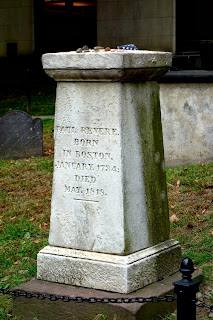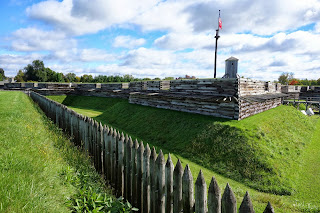This dim room was a casemate, where about 40 soldiers cooked and slept, ten to a bed! It was believed at the time that stretching out to sleep was unhealthy, so they slept propped or sitting up. We watched a film about life in the fort and there was certainly nothing glamorous about it. It was a hard and uncomfortable life. After the siege, the American forces expected attack, and for fourteen months kept hundreds of men at the ready. Attack never came, but boredom and cold took its toll on the troops, causing several to desert. They were captured and executed.
|









































